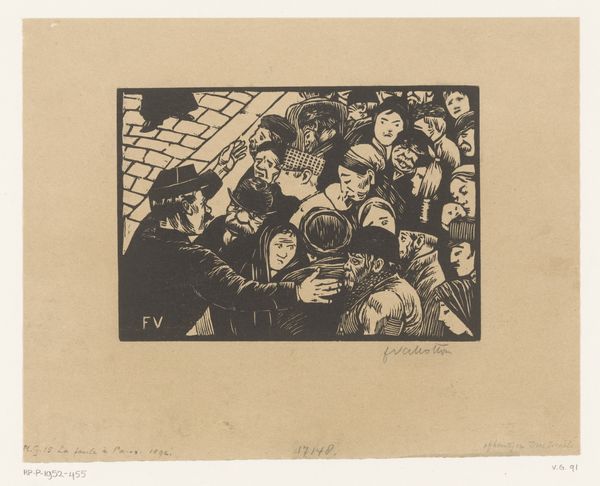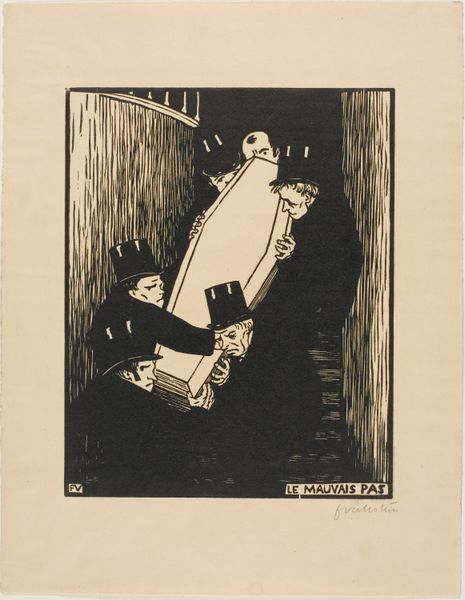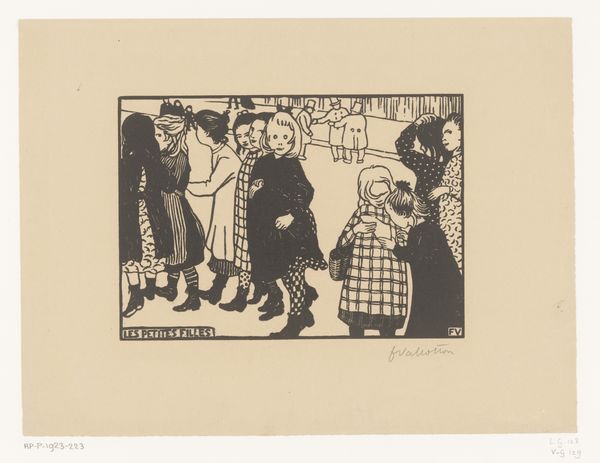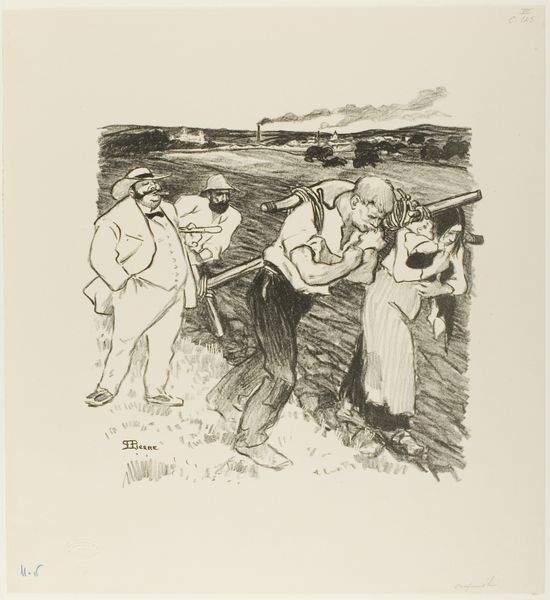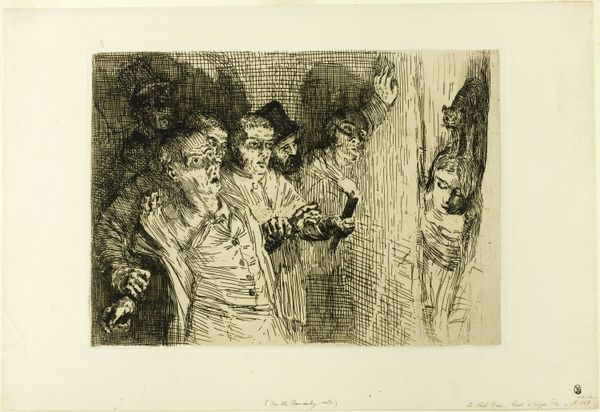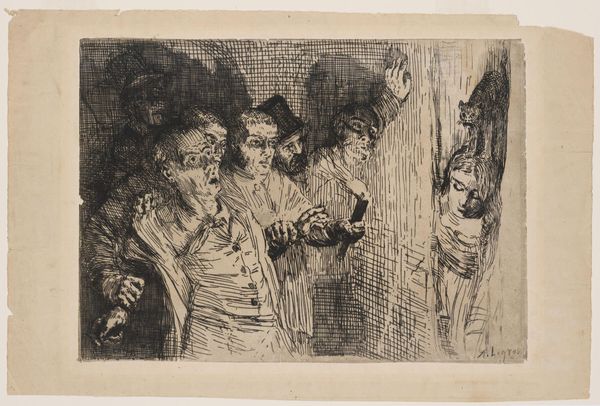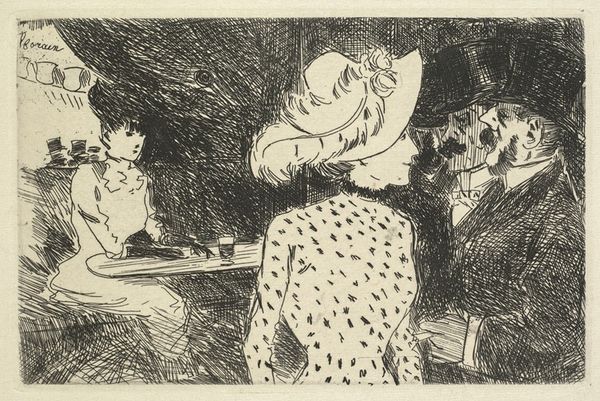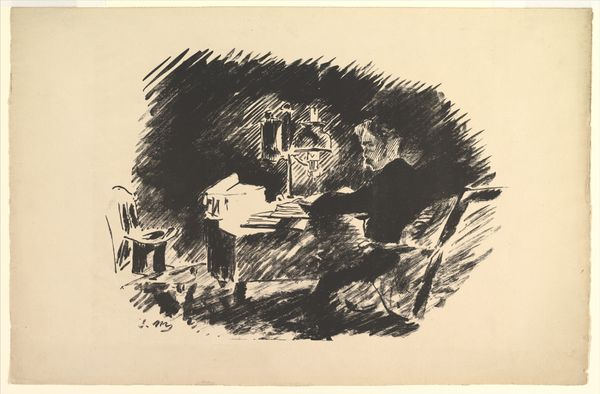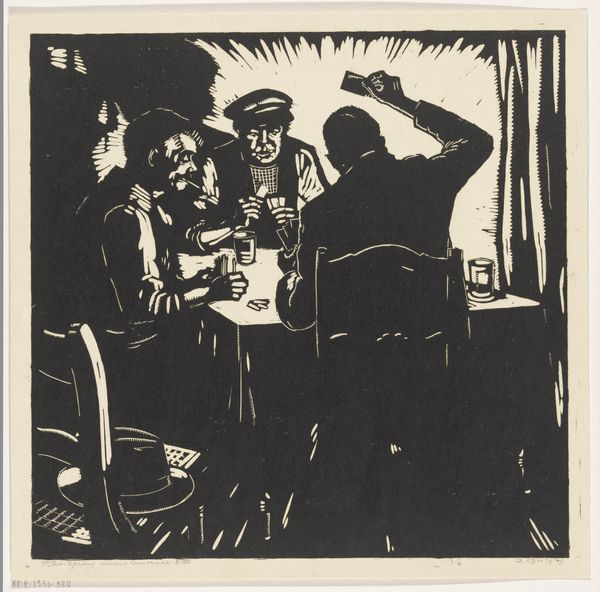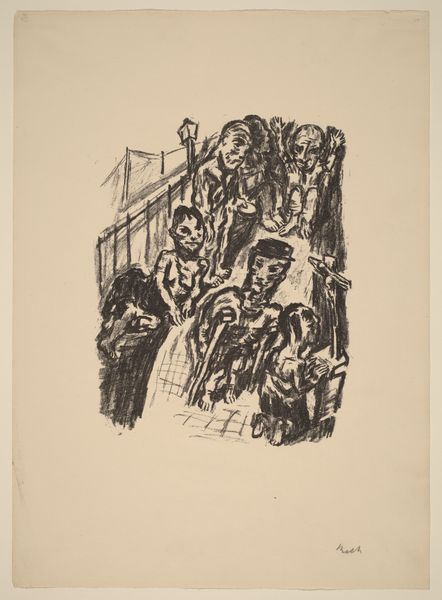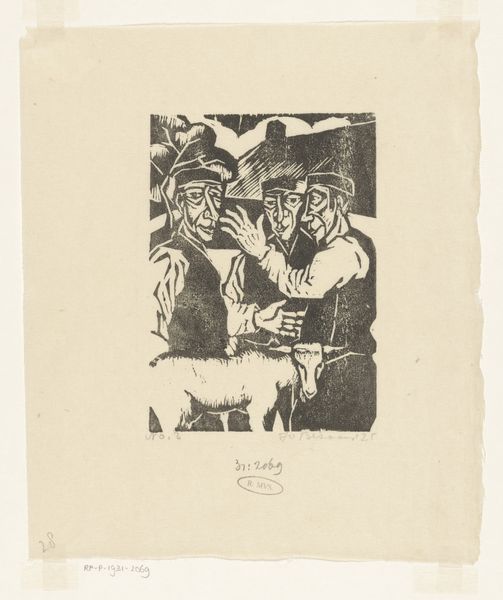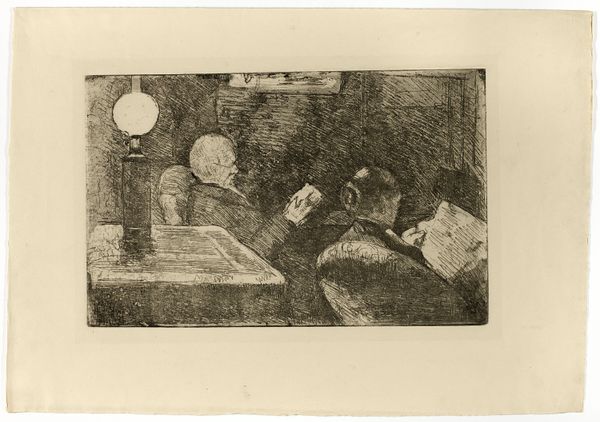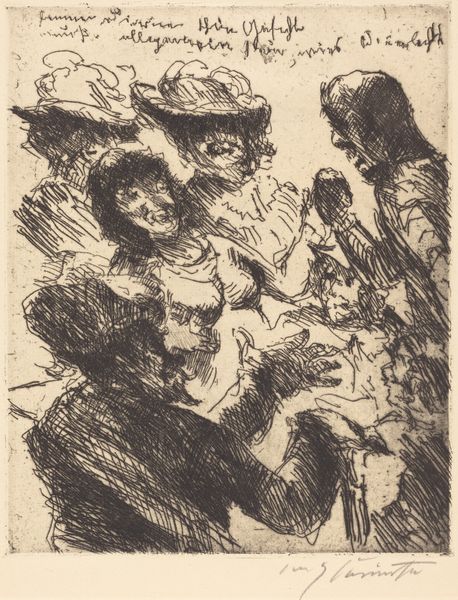
drawing, print, ink
#
portrait
#
drawing
#
ink drawing
# print
#
impressionism
#
ink
#
genre-painting
Dimensions: plate: 9 5/8 x 13 5/16in. (24.4 x 33.8cm) sheet: 10 x 13 11/16in. (25.4 x 34.8cm)
Copyright: Public Domain
Curator: Immediately, I'm struck by the stark contrast and almost voyeuristic feel of this print. Editor: Indeed. What we are observing is Édouard Manet’s "In the Upper Gallery (Au Paradis)," created in 1877 using ink. It's a compelling genre scene held here at the Metropolitan Museum. Curator: Genre-painting, yes, but the lack of color pushes it toward commentary, I think. These almost shadowy figures feel alienated despite their proximity to each other and whatever spectacle they're viewing. The quick, decisive marks of the ink really amplify that sense of immediacy and even a certain anxious energy. Who are they watching? And what does it say about us, the viewer, now observing them? Editor: Manet was fascinated by modern life and its representations. The theatre, and who occupied it, spoke volumes about the socio-economic fabric of Parisian society. The figures themselves are generic, types, perhaps representative of a certain emerging middle class seeking leisure and entertainment. Think about what was occurring in that time: what social role would theater, opera or comedy have during that era? Curator: I see that, and thinking about it through a modern lens, are they active participants or passive consumers in this space? And more critically, whose stories are deemed worthy of being staged and consumed? The quick, almost frantic nature of the medium, really conveys that sense of the fast pace of a city during that period. The almost anonymous crowd dynamic can lead us to examine the role gender and class play within urban settings. Editor: Manet was deeply concerned with representing modern life accurately. These are not romanticized ideals; they are portraits of real, complex people navigating an evolving society and culture. I believe we can learn how the burgeoning leisure and entertainment economies played a crucial part in forming the new patterns of Parisian life by studying his art, but also understand who that "new normal" excluded. Curator: Well said. It serves as a powerful prompt, I think, encouraging us to analyze both the art and its historical significance. Editor: Agreed. Hopefully, this helps to think of that in the face of this scene and to consider the complexities embedded within it.
Comments
No comments
Be the first to comment and join the conversation on the ultimate creative platform.
